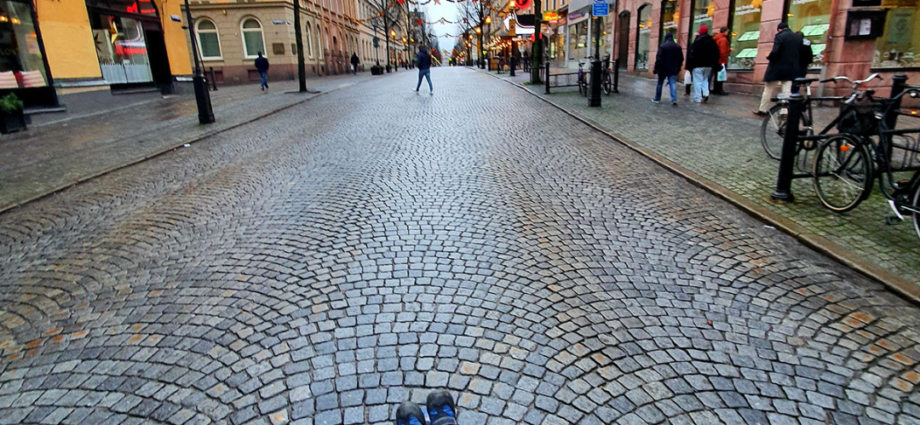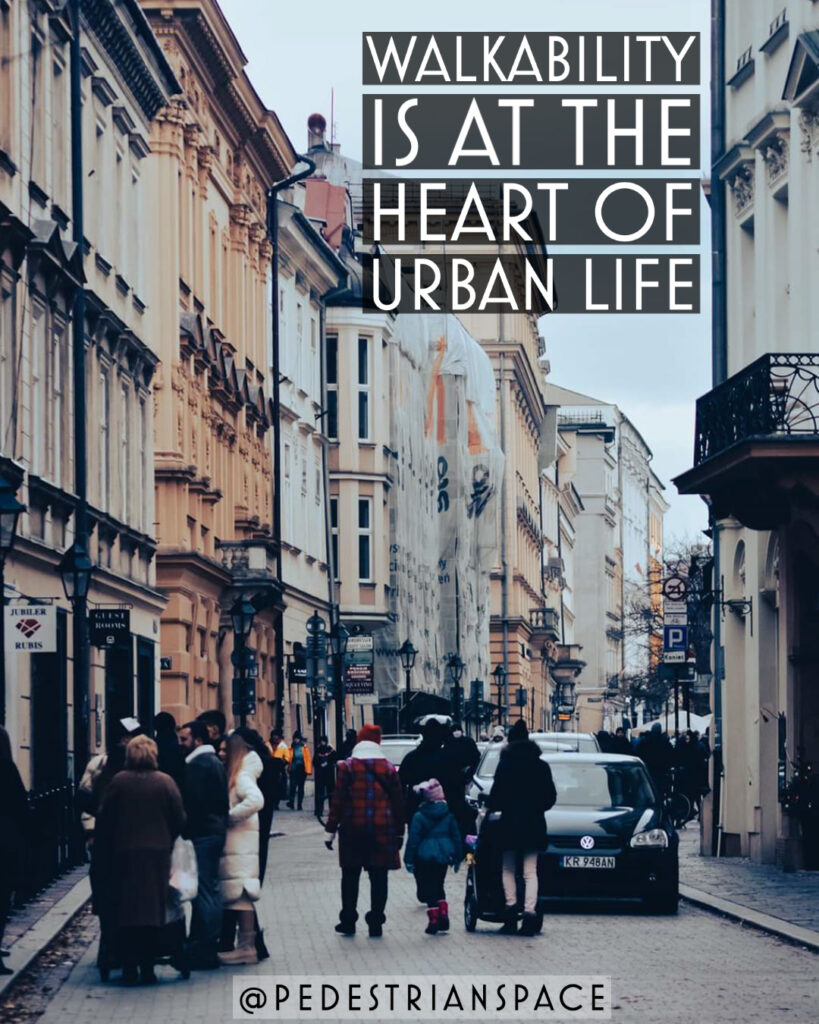
Photo: Annika Lundkvist
One year ago I decided to expand beyond @pedestrianspace as just a social media presence and to establish this website.
My initial plan was to use the platform to document and explore barriers and best practices to pedestrianization plans. As the year went by, my focus expanded to be more broadly on the many dimensions of walkability and its central role in sustainable urbanism.
It then further expanded as I realized that focusing on issues of car-dependence, from an individual and societal perspective, was essential if we truly want to develop walkable communities. This focus includes issues of the psychology of our mobility choices as well as the systemic, cultural and structural changes that need to occur to move away from car-centric planning and lifestyles.
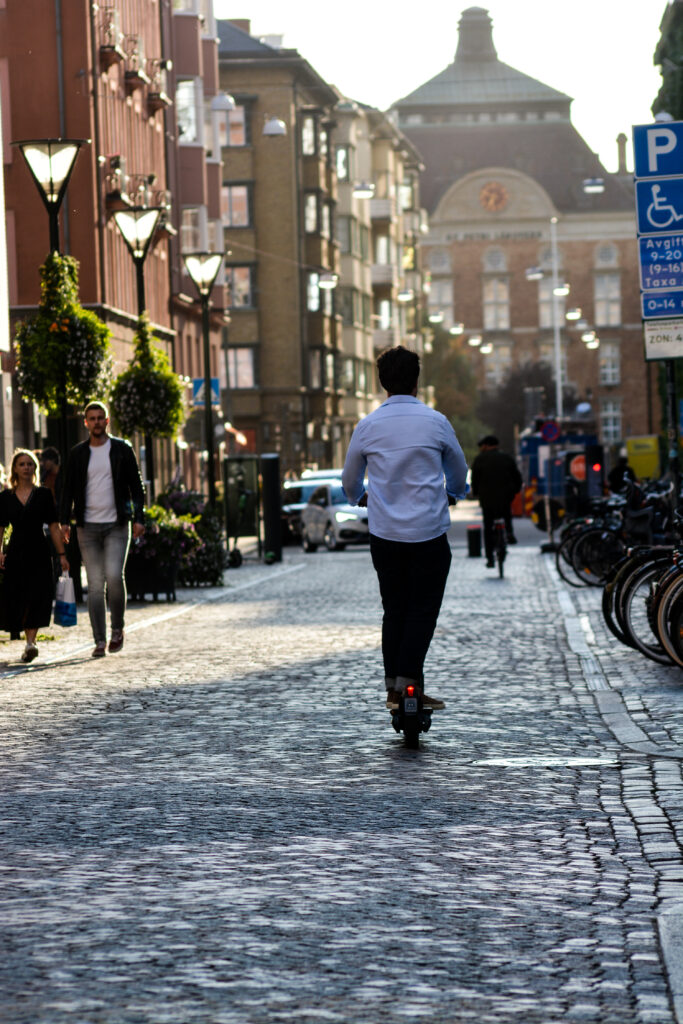
I cheer every successful conversion of an urban core area to low traffic or car-free zones, but without great attention also to broader issues of existing & deeply ingrained car-dependence on an individual & societal level (a much less “sexy” area in the urbanism & mobility conversation), we will continue to struggle with all the societal and environmental ills that car dominance has created.
Having lived in many cities with varying degrees of walkability, I’ve been aware for decades that while the challenges we face may be local and specific, there is so much potential for constructive change when looking to solutions in other regions.
Innovation and new tools are not always the solutions we need the most. We can benefit from learning about common sense planning practices that have worked for in other places and adapting to our own.

Before moving to Poland in 2021, my family and I spent the last several years living in Örebro, a city I experienced as being a textbook example of a 15-minute city. A lot of the qualities of the city that contributed to that were rather mundane and probably taken for granted by locals who grew up with it as the norm. But they were features that had been clearly prioritized by local planners there for decades and manifest in a city with a highly walkable urban core and basic, quality connectivity to the suburban peripheries (via foot and cycling paths as well as public transit).
Proximity to amenities also appeared to be a mainstay in the culture of planning, with most neighborhoods having convenient access to clinics, libraries, grocery stores, green spaces, playgrounds, schools and other basic and important community features.
So, for example, rather than viewing this concept of the 15-minute city as novel, we could recognize that examples of such cities and towns already exist and simply learn from them and their history of planning.
I conducted my pilot ‘city mobility survey’ on this topic with a small group in Örebro, surveying others perceptions of the city as a 15-minute city which you can read about here.
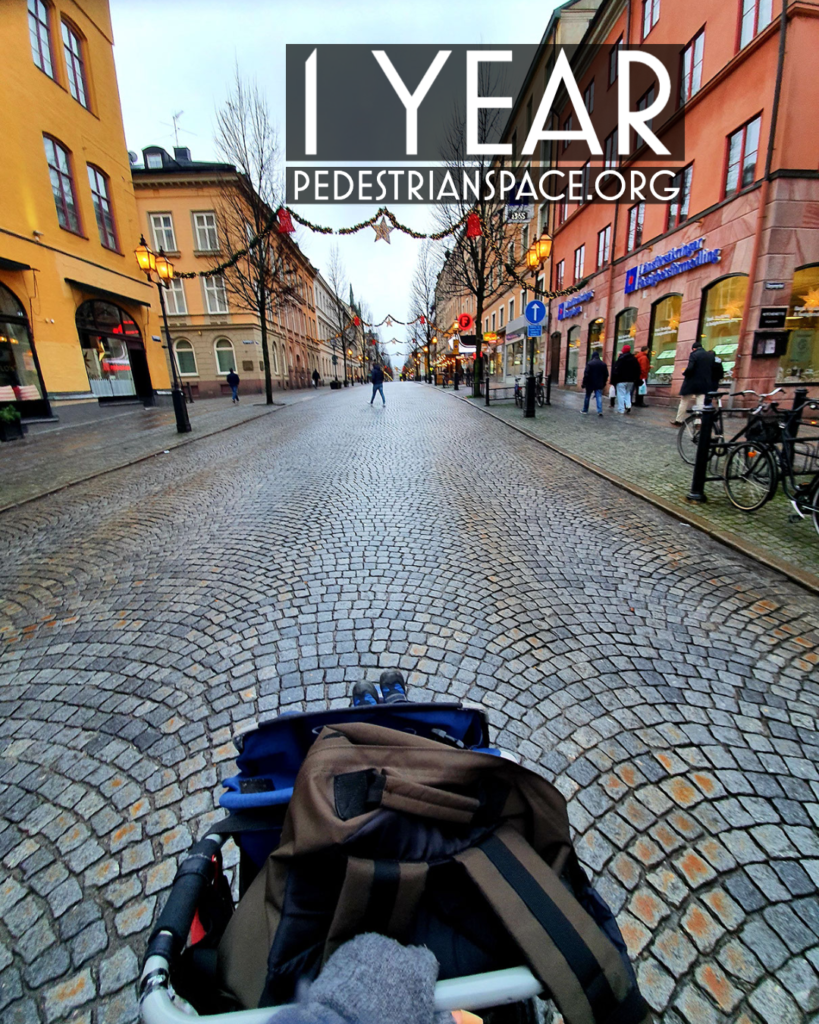
My understanding of inclusion, particularly with regards to mobility issues, has expanded greatly in recent years and no doubt has more to grow. Inclusive practices for me here at Pedestrian Space involve staying open to different narratives. I am not the expert on what it will take for walkability to thrive in every single community nor can I ever claim to represent or even understand every person’s experiences moving around their home regions.
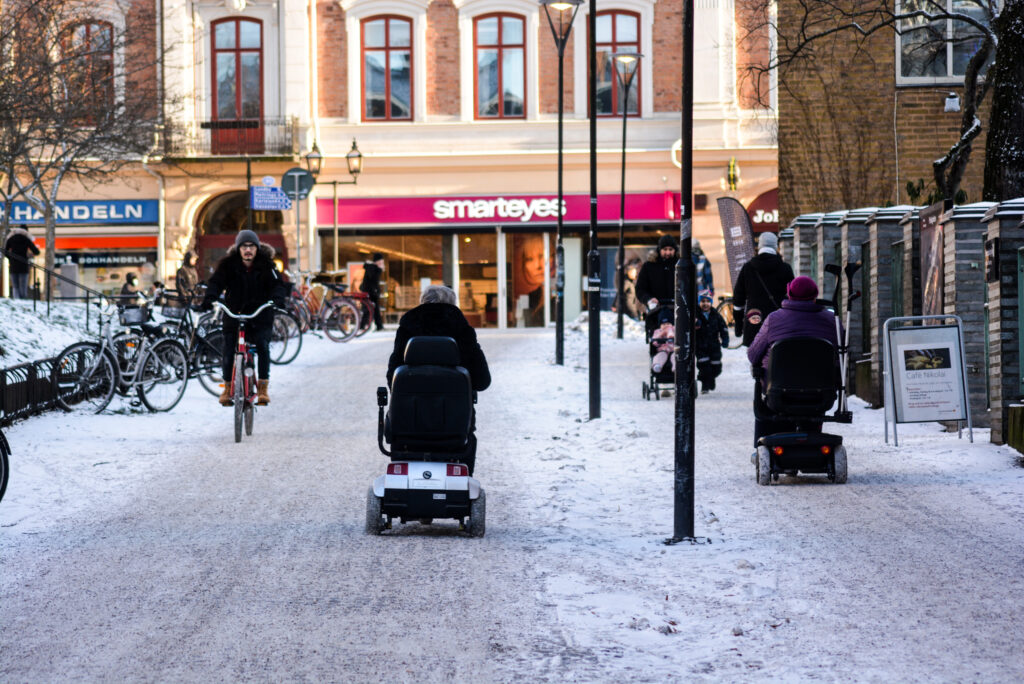
But I do aspire to be able to advocate for many voices and experiences which requires listening and being present for the stories people have to share. Additionally, this platform was also established to be a global resource which naturally requires welcoming in many and diverse viewpoints and perspectives.
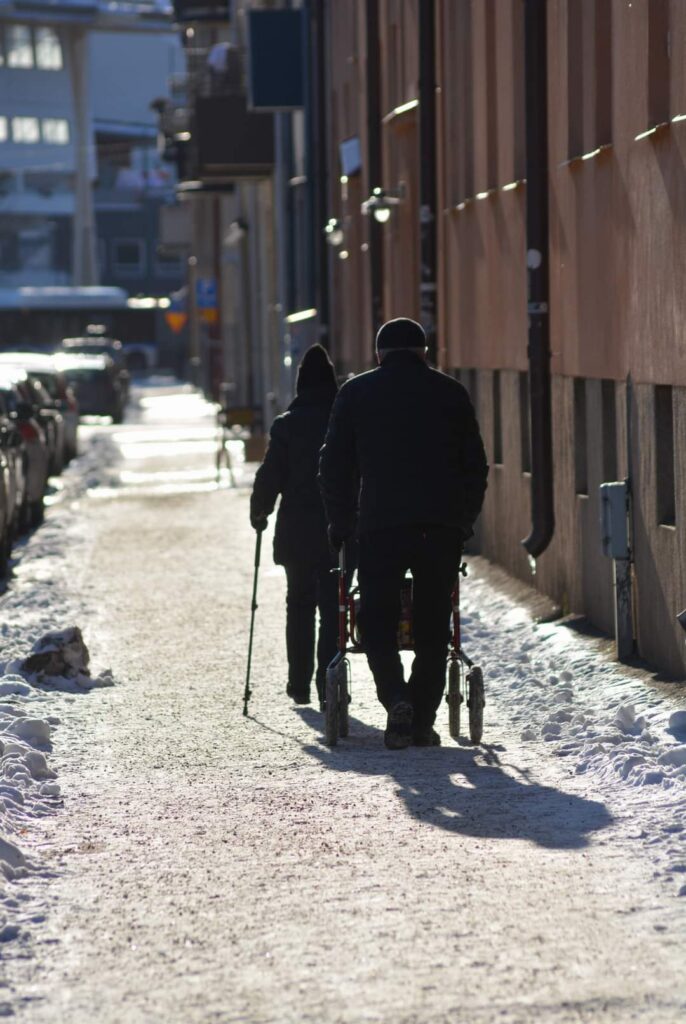
I recently shared some photos of cars parked on sidewalks here in Poland where we currently live. It’s a country I’m fascinated by and have even come to quietly love in our short time here thus far. But this is an issue I would spotlight anywhere I saw it.
When I began to share more photos, people from across the world commented that it is a problem in their communities as well. People commented from across the USA, Germany, Iceland, Hungary, Australia and more. It became clear to me that this is a problem in cities around the globe.
All places have their varying issues- some readily apparent and others sometimes not so obvious (particularly to outsiders).
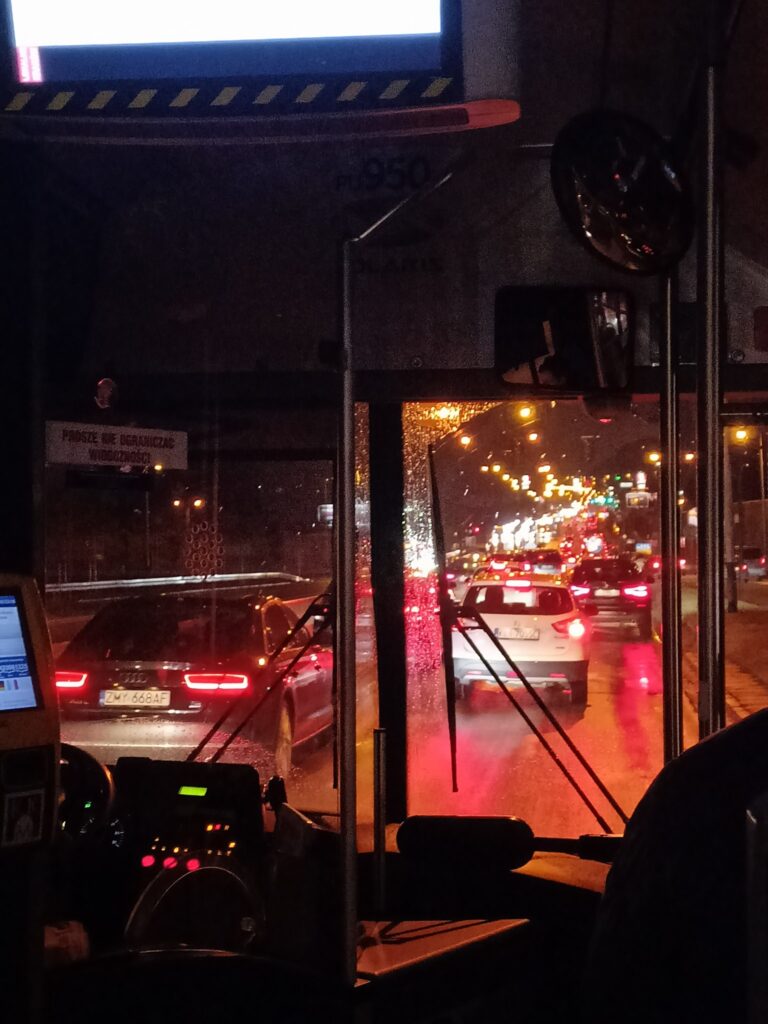
Traffic as seen from the city bus on the Zakopane highway in Kraków region,
Photo: Annika Lundkvist
A recent letter by Executive Director Mike McGinn at America Walks noted that, “Unfortunately, the policy debate often leaves out the most basic no-carbon form of transportation – walkability. We will never get to what the science calls for – deep reductions fast – without making walkability a priority.“
The recent controversy regarding the complete absence of active mobility on the Transport Day agenda at COP26 (the 26th Conference of the Parties to the United Nations Framework Convention on Climate Change) also highlights how absurdly neglected walkability and other forms of truly sustainable mobility are.
A lineup of some of the coverage:
- FORBES: Active Travel, Transit Added To Official COP26 Declaration After Last-Minute Appeal By EU Official, Carlton Reid
- Climate Home News: As Cop26 car pledge underwhelms, delegates ask: where are the bikes?, Isabelle Gerretsen
- Daily Sabah: A pedal-less COP26, Celal Tolga Imamoglu
- Headington Livable Streets: Active travel gets last-minute look-in at COP26
- ZAG Daily: Was shared and sustainable transport given a fair share at COP26?, Matthew Pencharz
How did it happen that a Climate Summit in 2021 had a complete lack of representation and vision regarding the central role of walking, cycling and public transit for truly sustainable urban and community development and required last-minute campaigning for these aspects to be included?
Stay tuned as we learn about and share here how this limited scope with a lack of representation of truly contemporary sustainable mobility needs came to pass in the first place…
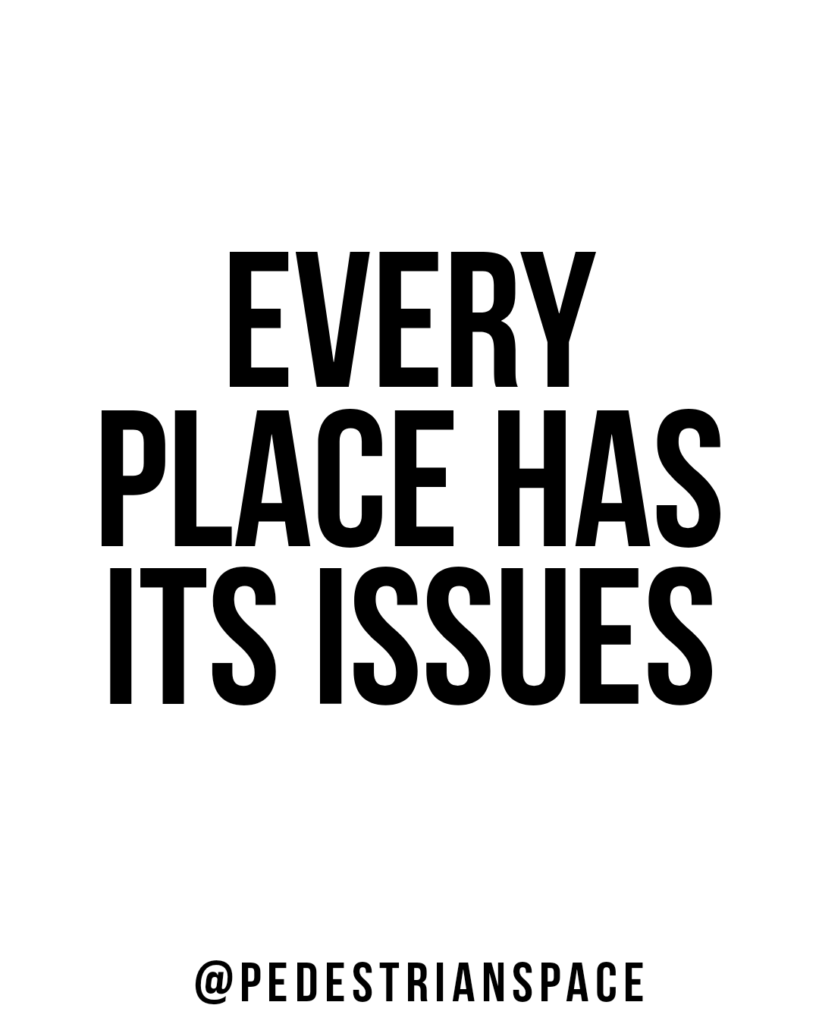
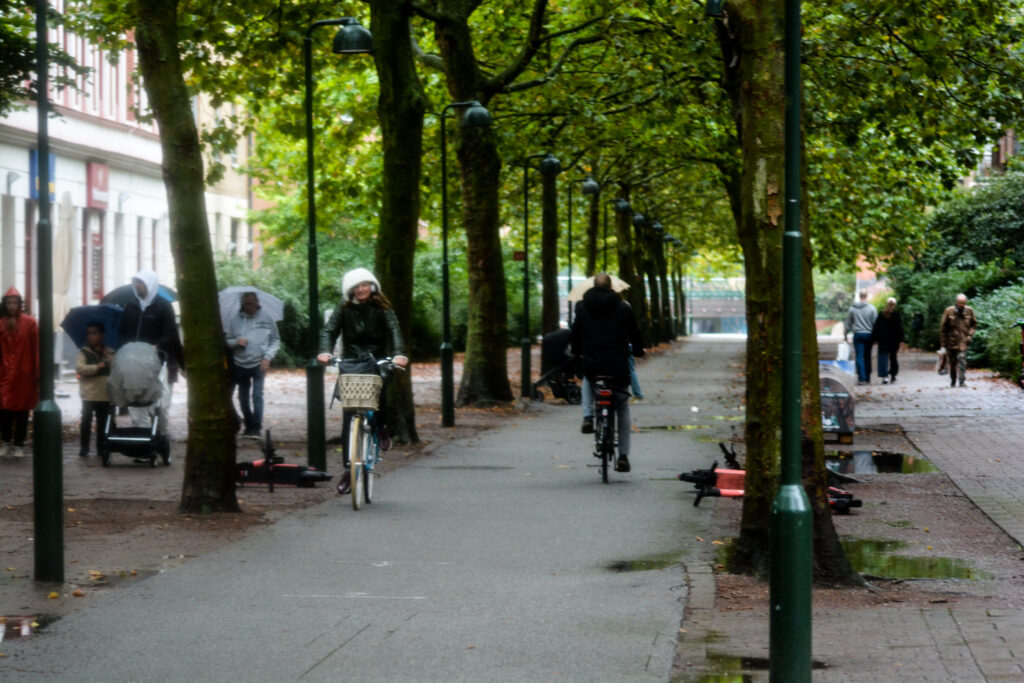
Issues of walkable lifestyles and places are at the heart of the coverage here at Pedestrian Space. Here in Europe, where we are based, there are a great number of examples of walkable urbanism (including here in Poland) but car dominance is still the norm across the continent. Additionally, some cities that are celebrated as being the most cycle-friendly cities in the world are not always well noted for their walkability and vice versa.
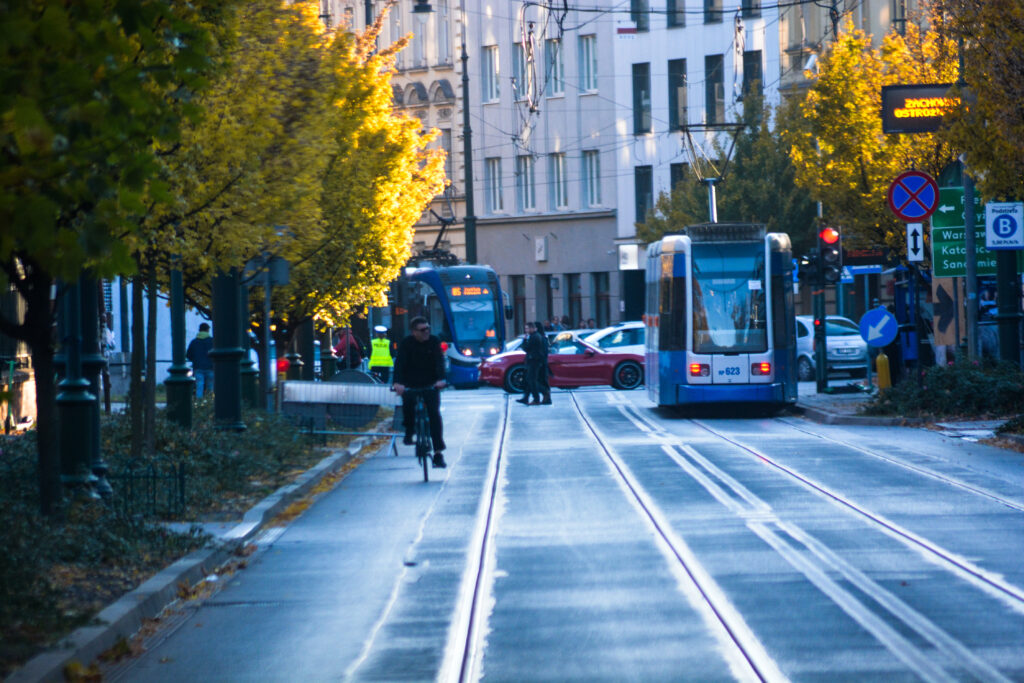
Photo: Annika Lundkvist
I cheer every successful conversion of an urban core area to low traffic or car-free zones, but without great attention also to broader issues of existing and deeply ingrained car-dependence on an individual and societal level, issues of connectivity and mobility in the suburbs (much less “sexy” areas in the urbanism and mobility conversation), we will continue to struggle with all the societal and environmental ills that car dominance has created.
My commitment to exploring the psychological, social, cultural, political and societal underpinnings of car dominance, for an understanding that is critical to a shifting mobility paradigm, will continue to be woven into coverage here.
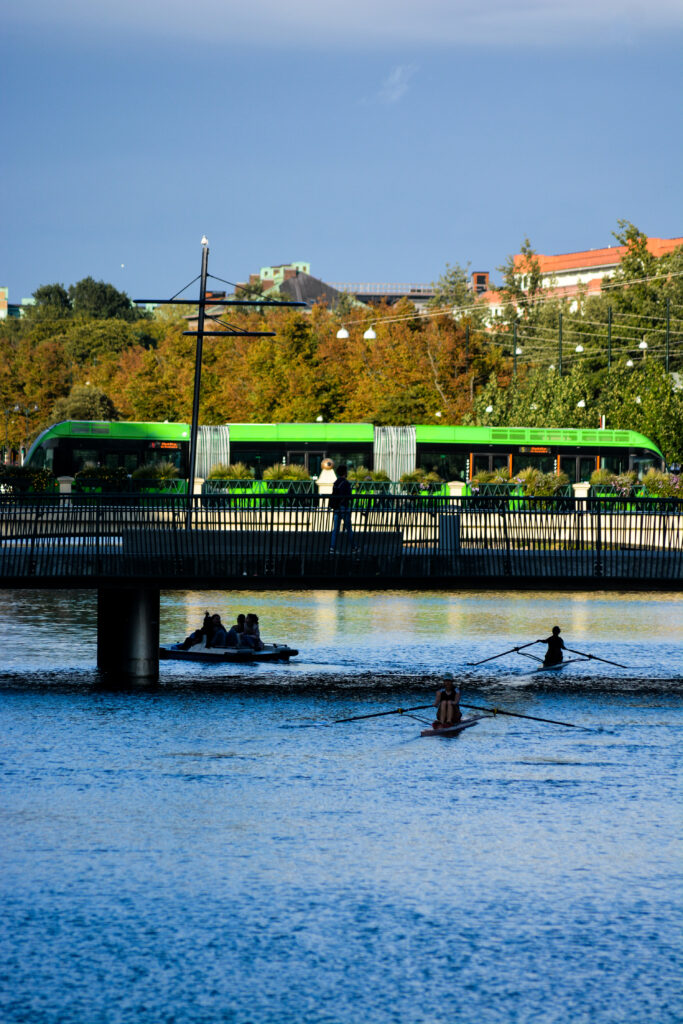
Something new: the ‘Global Walkability Correspondents Network‘. I began putting the call out for this emergent network late last year and am really excited by the passion, expertise and geographical diversity that is already represented in the group. It is a growing collective of individuals across the planet who are all truly passionate about issues of urban mobility and healthy communities.
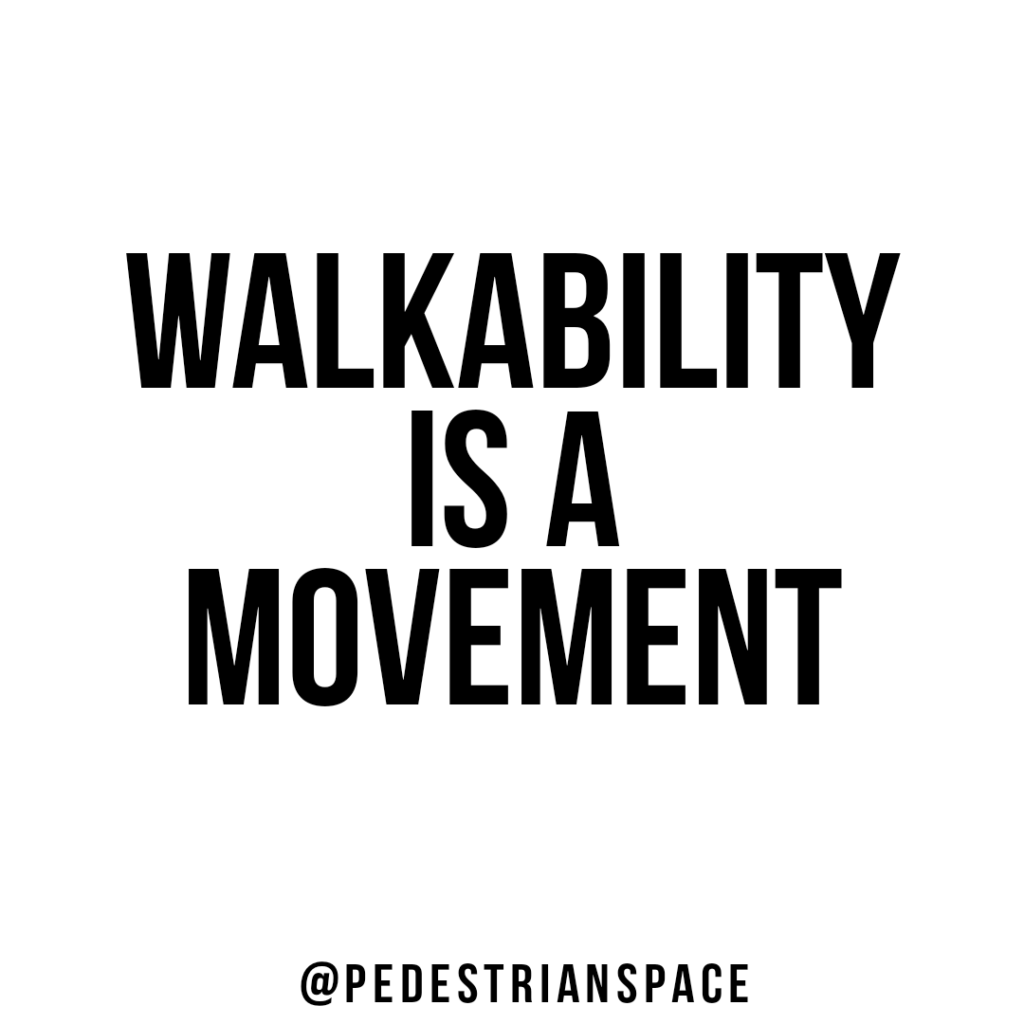
If you are interested in taking part in the network, feel free to contact us. Stay tuned for the first introductions and posts by correspondents around the world coming soon…
-Annika Lundkvist, Editor at ‘Pedestrian Space’
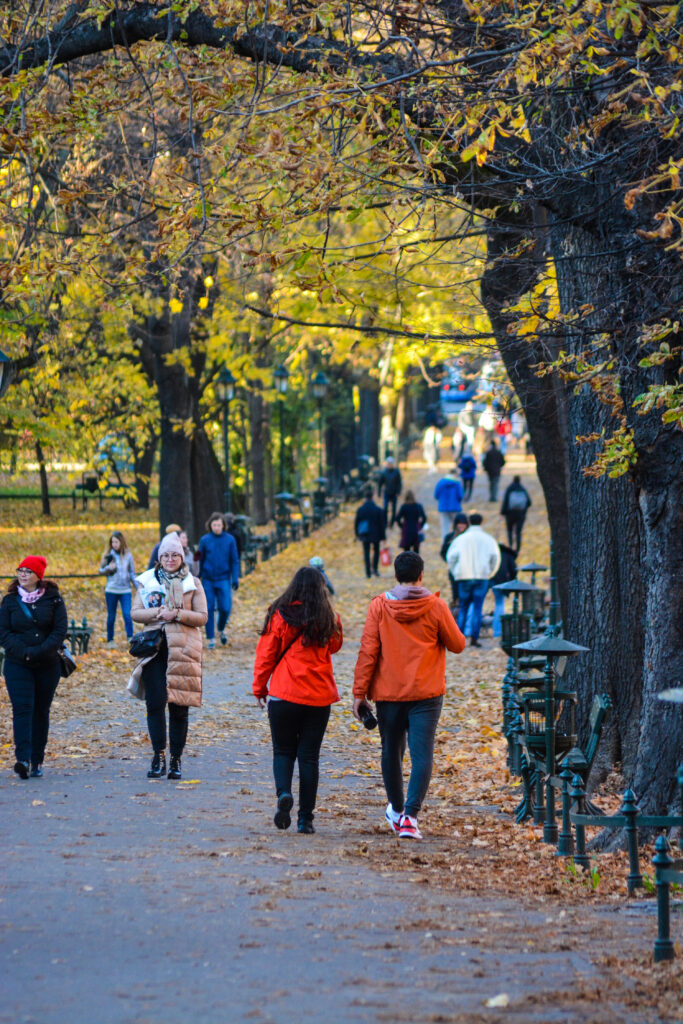
Photo: Annika Lundkvist

